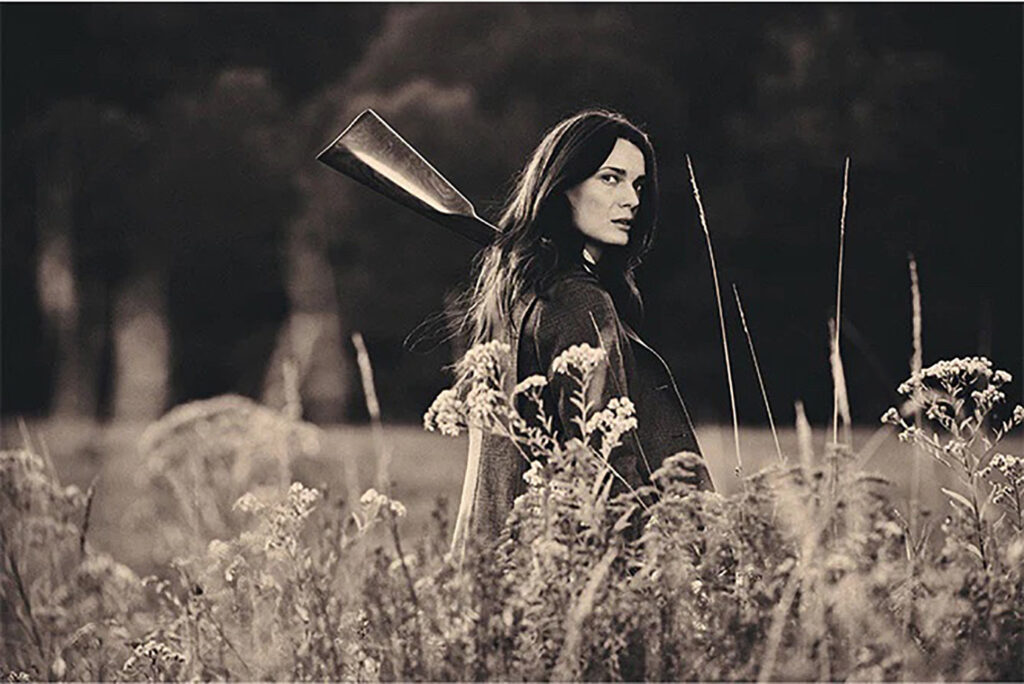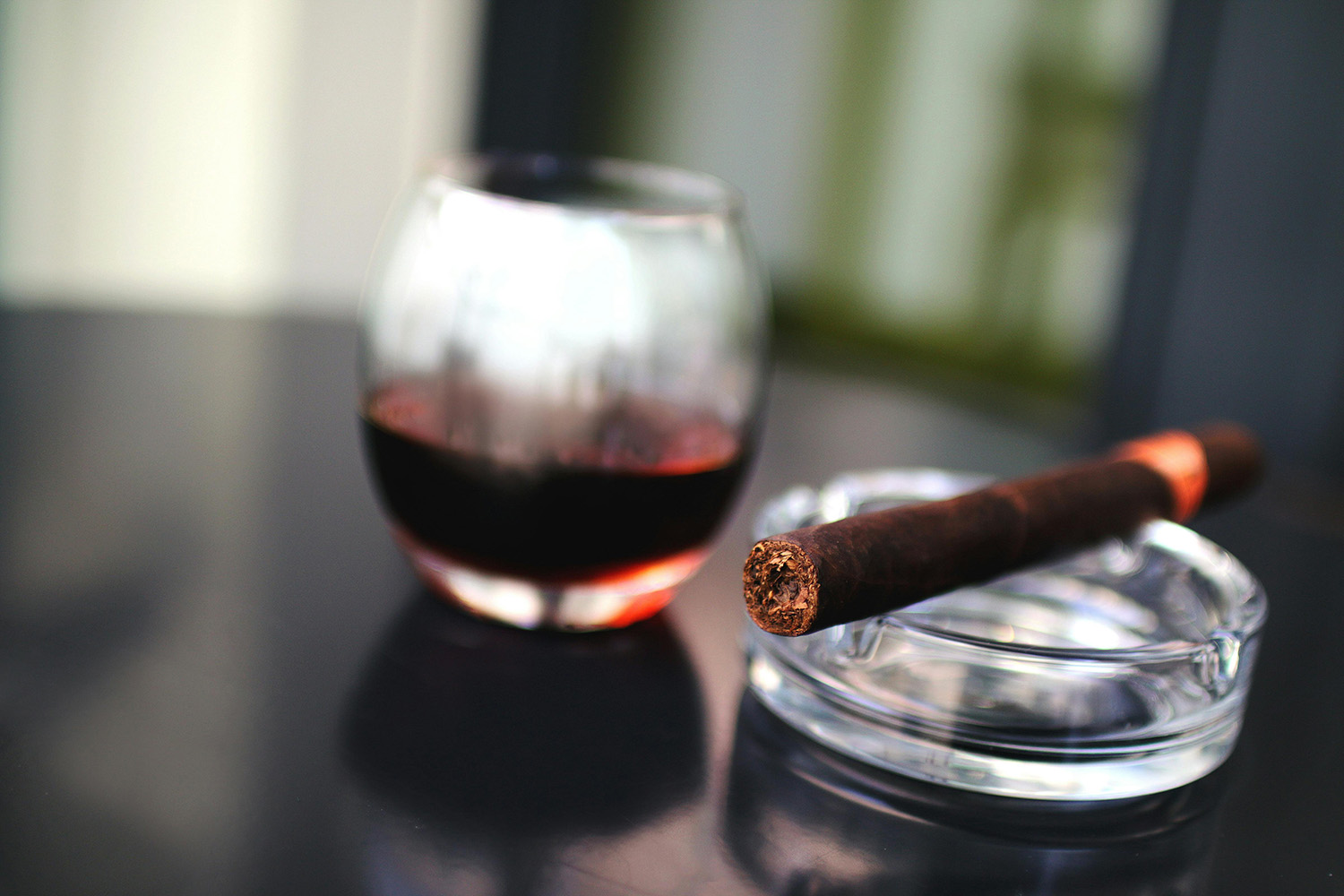FOR REASONS I CAN’T BEGIN TO FATHOM, A 2023 WESTLEY RICHARDS CATALOG ARRIVED IN THE MAIL A WHILE BACK. ADDRESSED TO ME. Fascinated, I opened to the first page, which offered a breathless description of the “Lyell gilet” on offer. I had no idea what a “gilet” was— the dictionary defined it as “a sleeveless jacket resembling a waistcoat or blouse.” A word of French derivation, the dictionary said, for what I call a vest. This one claimed to be made out of “smart fleece” and was available for the bargain price of $425.
I’m vaguely aware of an echelon in the hunting community that operates in a fiscal world half the universe from mine. For such folks, I assume a $425 fleece vest isn’t even an afterthought. The model on that page was also sporting a “must-have” expedition safari shirt for just $245, and, on the next spread, another rugged guy was leaning into an overhead passing shot with a side-by-side that must be one of those guns the Limeys call “bespoke.” The stripped-down model was priced at £69,500 Sterling or about $84,000 American, quite a little more than I paid for the house I’m living in these days.
As the years have gone by, I’ve managed to raise enough in the way of liquid assets to upgrade my hunting gear, so I’m no longer limping around on blistered feet, soaked to the skin, or hovering on the ragged edge of hypothermia, and, at the moment, I’m keeping two bird dogs, which, as anyone who hunts with canines will testify, isn’t cheap. Still, I think the price of that shotgun may be more than all the money I’ve spent on my outdoor pursuits over sixty years: dogs, clothes, guns, vehicles, licenses, travel— the whole shooting match.
Somewhere in the demographic research Westley Richards used to identify me as a potential customer, something went terribly, horribly wrong.
And that’s okay, I suppose— considering the prices Westley Richards is asking, I imagine they can afford the utter waste of a few catalogs. Judging from decades of experience, I think I’m safe in saying I will not meet one of their customers in the places I hunt and fish, and, since they represent no competition for scarce birds or coverts, I wish them well in their outdoor pursuits.
But there’s one other thing about this catalog that touches on a detail of the refined sporting experience I’ve never understood. The cover features a tight shot of a well-manicured male model with perfect teeth squinting into the late afternoon sun from under the waxed cotton brim of a safari hat, his salt-and-pepper whiskers whispering of a life spent on rough shoots for red grouse and treks on the high veldt in pursuit of cape buffalo and black-maned lions. Between index and middle finger, he wields a cigar that probably cost as much as my last pair of field boots.
It’s the cigar that stops me. There seems to be some connection between truly cultured venery and cigars, a connection I can be forgiven for not understanding, since the style of my venery is clearly not cultured.
I first encountered the use of the cigar as some sort of upscale talisman more than thirty years ago when, as a young editor of an outdoor publication, I perused a manuscript that described a gentleman who had ventured into the high Wind River Range of Wyoming, fly rod and vest in his pack, in pursuit of record golden trout. At one point in this trek, a thunderstorm loomed up over the peaks, and the angler was forced to take shelter in a talus field. He wrote that the hair on his arms and the back of his neck stood up with the static electricity in the atmosphere while the lightning stabbed the surrounding pinnacles. In that awful moment, with the power of the firmament dwarfing the very mountains themselves, he suddenly remembered the cigar he was carrying. He lit up in the shelter of the boulder where he crouched and watched the rest of the storm, wreathed in smoke, with the equanimity of a member of the elect.
At the time, the cigar seemed more parenthesis than exclamation point; in fact, it struck me as a little silly, a distraction from the mood the writer was trying to communicate, but in subsequent decades as editor and reader of outdoor literature, I’ve encountered the cigar over and over again. The cigar as the pinnacle of satisfaction after a day spent in the pursuit of giant cutthroat trout on the South Fork of the Snake or discriminating browns on the Beaverkill. The cigar in a moment of quiet contemplation after a morning with Atlantic salmon on the Miramichi. The cigar in a respite from the presentation of Number 22 dries while considering the work of Izaak Walton on the River Test. The cigar as celebration for the success of a long hunt for (fill in the blank) Dall sheep, mountain goat, ibex, mouflon, argali, kudu, oryx, etc. The cigar as the subject of feature articles in upscale sporting magazines. The cigar as a companion with a fine single-malt scotch when the setters have been fed and the quail have been turned over to the help for processing. That link with rare scotch is a connection of long standing, although, in recent decades, the range of alcoholic beverages acceptable to the enlightened seems to have expanded to include expensive bourbon and even— gasp!— beer, although it must be a craft brew with origins so obscure and name so outlandish that no reader could possibly have any experience with it.
When I consider the history of the writing and art that have taken up the hunting and fishing experience with some pretension, I can see that this fixation with tobacco is nothing new. For generations, the pipe was the sporting gentleman’s preferred accessory, along with a cravat and a tweed jacket. I’m not sure why the pipe faded in popularity— it’s possible that, by the mid-twentieth century, stylish gentlemen had simply lost patience with the constant maintenance a pipe requires. Since the common folk were comfortably addicted to cigarettes or chew by then, I suppose the expensive cigar was the next logical way for sportsmen of means to demonstrate their rarified tastes.
And the taste IS rarified. I’ve never been a smoker, but, like most of my generation, I grew up in a household of adults who were seldom without a cigarette. I never liked the smell of Camel straights, but, since that cloud of combusting tobacco was my dad’s constant companion, I had no choice but to put up with it. One of Dad’s cronies preferred a pipe. I have no idea what blend he used, but it was some of the only tobacco smoke I’ve ever been forced to breathe that actually had a pleasant scent. My limited experience with cigars has been far less pleasant.
There was a huge oil refinery about twenty miles south of my childhood home. Thanks to the prevailing west wind, the stench from that facility generally drifted to the south of us, but, often on a spring morning when the moisture was drifting up the Mississippi from the Gulf, we spent a day inhaling that indescribable fragrance. In my admittedly limited experience, cigar smoke combines that inimitable bouquet with the exhalation from the typical pit toilet and undertones of compost. I think it’s fair to say that, from a strictly esthetic point of view, the transition from pipe to cigar among sporting folk has not been an improvement, at least for the folks nearby.
 If your idea of post-sporting bliss is inhaling the rich fumes of a Cuban Cohiba, you certainly do not need to pay any attention to the rants of heathens like me. One of the most appealing elements of the hunting and fishing experience is its freedom, its privacy. My quarrel isn’t with the cigar smoking itself; it’s with the use of the cigar as a symbol in writing and photography of the more ethereal, refined planes some hunters and anglers achieve in these pursuits. I’m not sure cigars ever had anything to do with that higher plane, but, if there was ever a connection, it’s long since faded for most Americans, even most hunters and anglers.
If your idea of post-sporting bliss is inhaling the rich fumes of a Cuban Cohiba, you certainly do not need to pay any attention to the rants of heathens like me. One of the most appealing elements of the hunting and fishing experience is its freedom, its privacy. My quarrel isn’t with the cigar smoking itself; it’s with the use of the cigar as a symbol in writing and photography of the more ethereal, refined planes some hunters and anglers achieve in these pursuits. I’m not sure cigars ever had anything to do with that higher plane, but, if there was ever a connection, it’s long since faded for most Americans, even most hunters and anglers.
If the sporting press should ever dispense with cigars as a status symbol, I suppose there would be a need for some other prop that implies the same sort of upscale connection— a tin of beluga caviar next to the bespoke double gun? A smear of paté on a dainty slice of Melba toast next to a brace of red-legged partridge? Or maybe, just perhaps, we could dispense with the not-so-subtle suggestions of class and status altogether and focus on the heart of the experience itself.
As for the fine folks at Westley Richards and other upscale retailers, I think they might profit by attending to the marketing strategies of their colleagues to the south, the manufacturers in Italy and Spain. They’re masters at finding smoldering young female models who wear the tailored tweeds, leather shell bags, and six-figure double guns offered in the catalog with sinuous grace while staring into the camera with eyes that would melt titanium. Smoldering Cuban cigar or smoldering Spanish lady— I know which one says “class” to me.
————

Leave a Reply
You must be logged in to post a comment.